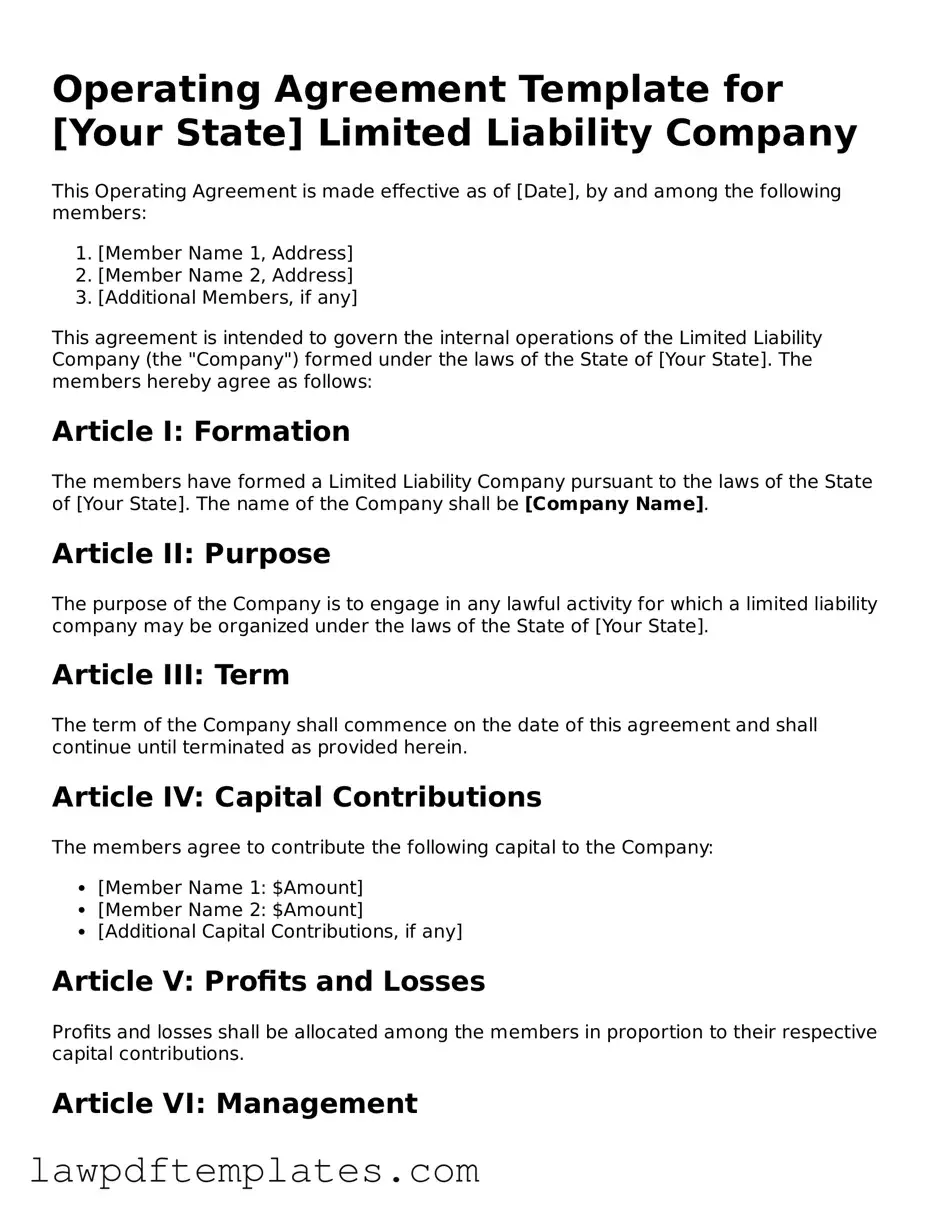Operating Agreement Template for [Your State] Limited Liability Company
This Operating Agreement is made effective as of [Date], by and among the following members:
- [Member Name 1, Address]
- [Member Name 2, Address]
- [Additional Members, if any]
This agreement is intended to govern the internal operations of the Limited Liability Company (the "Company") formed under the laws of the State of [Your State]. The members hereby agree as follows:
Article I: Formation
The members have formed a Limited Liability Company pursuant to the laws of the State of [Your State]. The name of the Company shall be [Company Name].
Article II: Purpose
The purpose of the Company is to engage in any lawful activity for which a limited liability company may be organized under the laws of the State of [Your State].
Article III: Term
The term of the Company shall commence on the date of this agreement and shall continue until terminated as provided herein.
Article IV: Capital Contributions
The members agree to contribute the following capital to the Company:
- [Member Name 1: $Amount]
- [Member Name 2: $Amount]
- [Additional Capital Contributions, if any]
Article V: Profits and Losses
Profits and losses shall be allocated among the members in proportion to their respective capital contributions.
Article VI: Management
The management of the Company shall be vested in its members. Decisions shall be made by a majority vote of the members, unless otherwise specified.
Article VII: Distributions
Distributions of cash or other assets shall be made to the members at the discretion of the members, based on their respective ownership percentages.
Article VIII: Indemnification
The Company shall indemnify its members against any losses, liabilities, or expenses incurred in connection with the Company's business.
Article IX: Amendments
This Agreement may be amended only by a written agreement signed by all members.
Article X: Governing Law
This Agreement shall be governed by and construed in accordance with the laws of the State of [Your State].
IN WITNESS WHEREOF, the members have executed this Operating Agreement as of the date first above written.
__________________________
[Member Name 1]
__________________________
[Member Name 2]
__________________________
[Additional Members, if any]
